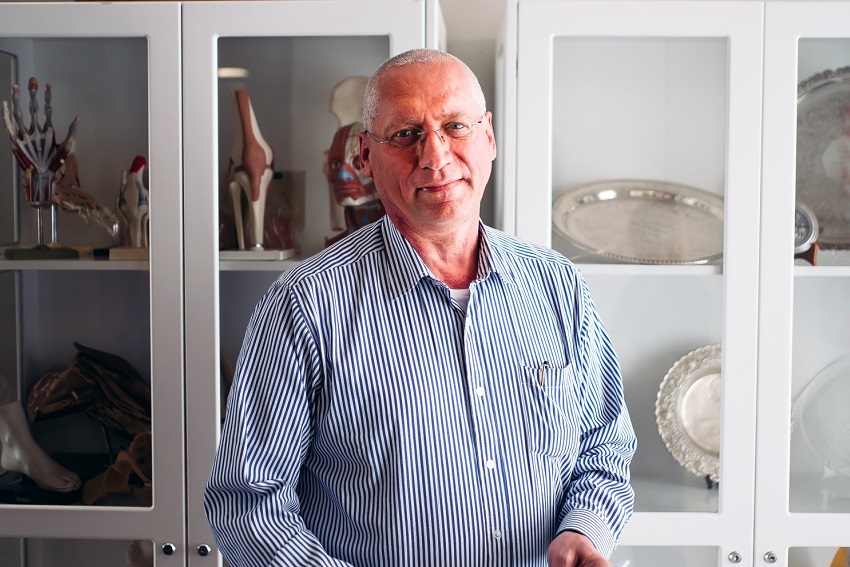Young adults at risk of stroke

Almost one in four people aged 25 years are at risk of developing a stroke during their lifetime, according to a new scientific study.
The study also shows that New Zealand (26.4 percent) has the second highest lifetime risk of stroke among developed countries, ahead of Canada (24.4 percent), the United States (23.7 percent), United Kingdom (21.2 percent) and Australia (21 percent). The highest is Finland (29.3 percent).
Professor Valery Feigin, Director of the National Institute for Stroke and Applied Neurosciences at Auckland University of Technology, says this could be related to the significant proportion of Māori and Pacific peoples in New Zealand, who have more than double the risk of stroke compared to Europeans.
He also maintains that ‘stroke is getting younger’.
“Young adults need to think about long-term health risks. There is a lot they can do to modify their risk of stroke, such as eating a healthier diet with more fruit, vegetables and wholegrains, avoiding tobacco and alcohol, increasing physical activity, and maintaining a healthy weight,” he says.
“The healthcare system needs to focus on stroke prevention at a much earlier age than 40 years. Although, more research is needed to determine cost-effective measures.”
Professor Feigin is the lead author of the study, “Global, Regional and Country-Specific Lifetime Risks of Stroke, 1990-2016”, recently published in The New England Journal of Medicine.
Researchers used stroke data from the Global Burden of Disease (GBD) study to develop a ‘risk score’ for entire populations to help guide healthcare policy around the world.
The ‘lifetime stroke risk’ is the cumulative probability of stroke developing in a person of a given age and sex during their remaining lifespan, after accounting for competing causes of death.
The analysis is unique in that it estimates the lifetime risk of stroke from the age of 25 years, and trends from 1990 to 2016, for 195 countries. In contrast, previous studies started at age 45 years and only for a select group of people in five countries at one point in time.
The study shows that the lifetime risk of stroke remains high and stable from the age of 25 years to 75 years, which indicates that intensive primary prevention should not be reduced among older people.
It also reveals large geographic variations. There is a fivefold difference in the lifetime risk of stroke, ranging from eight percent to 39 percent, depending on where you live. Although, there is little difference between the two sexes.
Among men and women aged 25 years, the three regions with the highest lifetime risk of stroke were East Asia (38.8 percent), Central Europe (31.7 percent), and Eastern Europe (31.6 percent). The region with the lowest lifetime risk was sub-Saharan Africa (11.8 percent).
“The relatively low lifetime risk of stroke in sub-Saharan Africa does not necessarily represent a lower incidence of stroke or more effective treatment and prevention strategies. People in this region are merely at higher risk of dying from other causes, such as malnutrition and infectious diseases,” says Professor Feigin.
The lifetime stroke risk in Oceania (16 percent), including New Zealand, Australia and the Pacific Islands, increased almost five percent from 1990 to 2016. Although, it remains below the global average (20.5 percent).
Global Burden of Disease (GBD) study
The GBD study is the world’s largest scientific effort to qualify the magnitude of health loss from more than 300 major diseases, injuries and risk factors, by age, sex and population. With more than 3,600 collaborators in 145 countries, the study has helped transform healthcare policy. It is coordinated by the Institute for Health Metrics and Evaluation (IHME) at the University of Washington.
Professor Valery Feigin
Professor Feigin is the Director of the National Institute for Stroke and Applied Neurosciences (NISAN) at Auckland University of Technology (AUT). He also co-chairs the neurology section of the GBD study, helping coordinate six expert panels with more than 400 members around the world.
He is one of the most influential scientific minds, ranking among the top one percent for citations in science and making an impact in solving the world’s biggest challenges. According to Scopus, his publications have been cited over 43,0000 times and downloaded from ScienceDirect almost 1,000,000 times. He was recently named the most cited scientist in New Zealand.